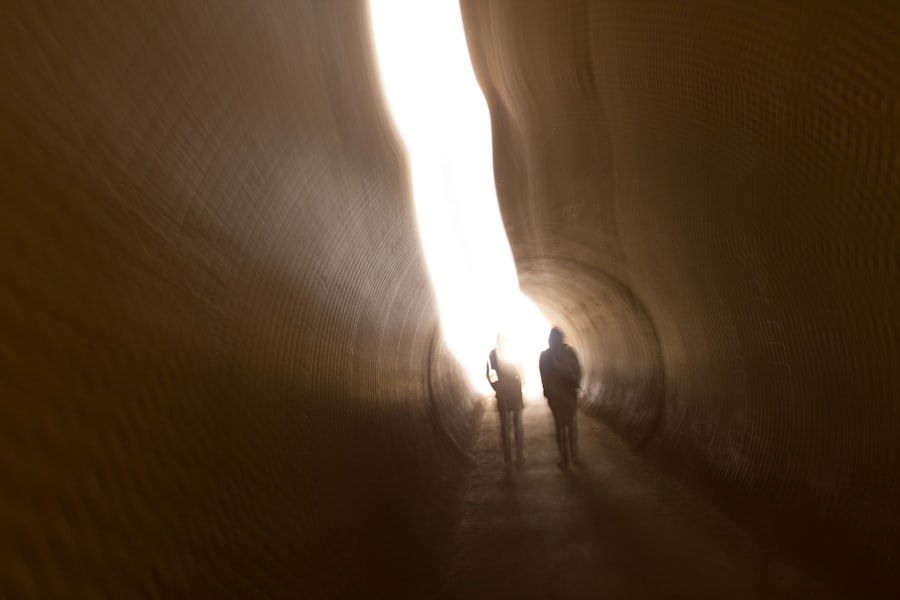The Drake Passage, a body of water situated between the southern tip of South America and Antarctica, is renowned for its tumultuous seas and unpredictable weather. Spanning approximately 800 kilometers (500 miles) in width, it serves as a critical maritime corridor for vessels traveling to and from the Antarctic region. Named after the English explorer Sir Francis Drake, who navigated these waters in the late 16th century, the passage is often regarded as one of the most challenging maritime routes in the world.
Its strategic importance cannot be overstated, as it connects the Atlantic and Pacific Oceans, facilitating not only commercial shipping but also scientific research and exploration. The passage is characterized by its unique geographical features, including the convergence of the Antarctic Circumpolar Current, which flows unimpeded around Antarctica. This current plays a significant role in regulating global climate patterns and marine ecosystems.
The Drake Passage is also notable for its deep waters, with depths reaching over 4,000 meters (13,000 feet), creating a complex underwater landscape that influences both oceanic currents and weather systems. As such, understanding the Drake Passage is essential for anyone venturing into these waters, whether for research, tourism, or commercial purposes.
Key Takeaways
- The Drake Passage is a narrow body of water between South America’s Cape Horn and the South Shetland Islands of Antarctica, known for its rough seas and strong winds.
- Weather in the Drake Passage is unpredictable and can change rapidly, with strong winds, high waves, and potential for storms.
- Navigational challenges in the Drake Passage include icebergs, strong currents, and the narrowness of the passage, requiring skilled and experienced crew.
- The Drake Passage is home to diverse wildlife and marine life, including penguins, seals, whales, and various seabird species.
- The Drake Passage has historical significance as the route taken by famous explorers like Sir Francis Drake and is a popular destination for cultural and scientific expeditions.
Weather and Climate in the Drake Passage
The weather in the Drake Passage is notoriously volatile, with conditions that can change rapidly and without warning. The region experiences strong winds, high waves, and frequent storms, making it a formidable challenge for mariners. The prevailing westerly winds can whip up waves that reach heights of over 10 meters (33 feet), creating a treacherous environment for vessels.
The combination of cold Antarctic waters and warmer air masses from the north contributes to the formation of fog and precipitation, further complicating navigation. Seasonal variations also play a significant role in the climate of the Drake Passage. During the summer months (November to March), temperatures are relatively milder, with average highs around 5°C (41°F).
However, even in summer, storms can occur, and sailors must remain vigilant. In contrast, winter months bring harsher conditions, with temperatures plummeting and ice becoming a concern for vessels operating in the area. Understanding these climatic patterns is crucial for planning any journey through the Drake Passage, as they can significantly impact safety and navigation.
Navigational Challenges

Navigating the Drake Passage presents numerous challenges that require skill and experience. The unpredictable weather patterns can create sudden squalls and rough seas, making it essential for mariners to be prepared for any eventuality. Additionally, the presence of icebergs and sea ice during certain times of the year adds another layer of complexity to navigation.
These floating masses can be difficult to spot in foggy conditions, posing a significant risk to vessels traversing the passage. Moreover, the strong currents that flow through the Drake Passage can affect a ship’s course and speed. Mariners must account for these currents when plotting their routes to ensure they reach their destinations safely and efficiently.
The combination of these factors necessitates a thorough understanding of maritime navigation techniques and an ability to adapt to rapidly changing conditions. For those unfamiliar with the area, seeking guidance from experienced captains or utilizing advanced navigational technology can be invaluable in overcoming these challenges.
Wildlife and Marine Life
| Category | Metrics |
|---|---|
| Wildlife | Number of endangered species |
| Marine Life | Percentage of coral reef coverage |
| Wildlife | Area of protected habitats |
| Marine Life | Population of marine mammals |
The Drake Passage is not only a challenging maritime route but also a vibrant ecosystem teeming with diverse wildlife and marine life. The nutrient-rich waters support an array of species, making it a prime location for marine biology research and wildlife observation. Among the most iconic inhabitants are various species of whales, including humpback whales, orcas, and blue whales, which migrate through these waters in search of food during certain seasons.
In addition to whales, the passage is home to numerous seabirds that thrive in its harsh environment. Species such as albatrosses, petrels, and skuas can often be seen soaring above the waves or diving into the water to catch fish. The presence of these birds is not only a testament to the rich biodiversity of the region but also serves as an indicator of the health of marine ecosystems.
For nature enthusiasts and researchers alike, the opportunity to observe such wildlife in their natural habitat is one of the many draws of exploring the Drake Passage.
Historical Significance
The historical significance of the Drake Passage extends far beyond its challenging waters. It has long been a critical route for explorers and adventurers seeking to uncover the mysteries of Antarctica and beyond. Sir Francis Drake’s voyage in the late 1500s marked one of the first recorded passages through these waters, paving the way for future exploration.
His journey not only contributed to maritime navigation but also expanded European knowledge of the southern hemisphere. Throughout history, the Drake Passage has been a focal point for scientific research and exploration. In the 19th century, whalers and sealers ventured into these waters, driven by economic interests.
Later expeditions by renowned explorers such as Ernest Shackleton and Robert Falcon Scott further solidified its place in maritime history. Their journeys through the passage were fraught with peril but yielded invaluable insights into polar exploration and human endurance. Today, this historical legacy continues to inspire modern-day adventurers and researchers who seek to understand both the challenges and wonders of this remarkable region.
Safety Precautions and Emergency Protocols

Given the unpredictable nature of the Drake Passage, safety precautions are paramount for anyone navigating its waters. Mariners are advised to conduct thorough pre-voyage preparations, including checking weather forecasts and ensuring that all safety equipment is in working order. Life jackets, flares, emergency beacons, and first aid kits should be readily available on board.
Additionally, vessels should be equipped with reliable communication systems to maintain contact with other ships and shore-based authorities. In case of emergencies, having established protocols is crucial for ensuring crew safety.
It is also advisable to have contingency plans in place for various scenarios, such as engine failure or severe weather conditions. By prioritizing safety measures and being prepared for emergencies, mariners can navigate the Drake Passage with greater confidence.
Recommended Routes and Itinerary
When planning a journey through the Drake Passage, selecting an appropriate route is essential for maximizing safety and efficiency. The most common route taken by vessels traveling from Ushuaia, Argentina, to Antarctica involves crossing directly through the passage. This route typically takes around two days, depending on weather conditions and vessel speed.
Travelers should be prepared for rough seas during this crossing but can look forward to breathtaking views of icebergs and wildlife along the way.
These detours can provide opportunities for sightseeing and wildlife observation while allowing travelers to acclimate to changing sea conditions gradually.
Regardless of the chosen route, careful planning is essential to ensure a smooth passage through this challenging yet awe-inspiring waterway.
Tips for a Smooth Passage
To ensure a smooth journey through the Drake Passage, travelers should consider several practical tips that can enhance their experience. First and foremost, it is advisable to pack appropriately for varying weather conditions. Layered clothing that can be easily added or removed will help individuals stay comfortable as temperatures fluctuate throughout the day.
Waterproof gear is also essential for protection against splashes from waves or rain. Additionally, travelers should remain flexible with their plans due to potential weather-related delays or changes in itinerary. Staying informed about current conditions through reliable sources will help individuals make informed decisions during their journey.
Engaging with experienced crew members or guides can also provide valuable insights into navigating both the passage itself and any unexpected challenges that may arise along the way.
Choosing the Right Vessel
Selecting an appropriate vessel is crucial when planning a trip through the Drake Passage. Various types of ships are available for this journey, ranging from large cruise liners to smaller expedition vessels designed specifically for polar exploration. Each option comes with its own set of advantages and disadvantages; larger ships may offer more amenities but may struggle with maneuverability in rough seas.
On the other hand, smaller vessels often provide a more intimate experience with opportunities for wildlife viewing and shore excursions but may lack some comforts found on larger ships. Ultimately, travelers should consider their priorities—whether they value comfort or adventure—and choose a vessel that aligns with their expectations for this remarkable journey.
Cultural and Scientific Expeditions
The Drake Passage serves as a gateway not only to Antarctica but also to numerous cultural and scientific expeditions that contribute to our understanding of this unique region. Many organizations conduct research trips aimed at studying climate change impacts on polar ecosystems or investigating marine biodiversity in these waters. These expeditions often involve collaboration between scientists from various disciplines who seek to gather data that can inform conservation efforts.
Cultural expeditions also play a vital role in fostering appreciation for this remote area’s history and significance. Travelers may have opportunities to engage with local communities or learn about indigenous cultures that have historically inhabited regions near the passage. By participating in such expeditions, individuals can gain deeper insights into both environmental issues facing Antarctica today as well as its rich cultural heritage.
Environmental Impact and Conservation Efforts
As interest in exploring the Drake Passage grows, so too does awareness of its environmental significance and vulnerability. The delicate ecosystems found within these waters are increasingly threatened by climate change, pollution from shipping activities, and overfishing practices that disrupt marine life populations. Recognizing this urgency has led to concerted conservation efforts aimed at protecting both marine habitats and wildlife.
Organizations dedicated to preserving Antarctic ecosystems advocate for sustainable practices among travelers and shipping companies alike while promoting responsible tourism initiatives that minimize environmental footprints during expeditions through these waters. By raising awareness about potential impacts on fragile ecosystems within the Drake Passage region—such as plastic pollution or disturbances caused by increased vessel traffic—stakeholders hope to foster greater stewardship among those who venture into this remarkable yet vulnerable area of our planet. In conclusion, navigating through the Drake Passage presents both challenges and opportunities for adventure seekers and researchers alike.
Understanding its unique geography, weather patterns, navigational difficulties, rich wildlife diversity, historical significance, safety protocols, recommended routes, vessel choices, cultural engagements, as well as environmental conservation efforts are all essential components that contribute to a successful journey through this iconic maritime corridor. With careful planning and respect for nature’s wonders—those who embark on this voyage will undoubtedly find themselves captivated by one of Earth’s most extraordinary regions.
The Drake Passage is notorious for its turbulent waters and challenging conditions, often considered one of the roughest sea passages in the world. For those interested in understanding more about the geographical and environmental factors that contribute to the Drake Passage’s reputation, a related article can be found on MyGeoQuest. This article delves into the unique oceanic and atmospheric dynamics that make this passage so formidable. To explore this topic further, you can read more on the MyGeoQuest sample page, which provides insights into the natural phenomena influencing the Drake Passage’s notorious roughness.
WATCH NOW! Drake Passage: Earth’s Deadliest Waters Revealed
FAQs
What is Drake Passage?
Drake Passage is the body of water between the southern tip of South America and the northern tip of the Antarctic Peninsula. It connects the southwestern part of the Atlantic Ocean with the southeastern part of the Pacific Ocean.
How rough is Drake Passage?
Drake Passage is known for its notoriously rough and unpredictable seas. It is often referred to as one of the most treacherous waterways in the world due to its strong winds, large waves, and potential for severe storms.
Why is Drake Passage so rough?
Drake Passage is located in a region where the westerly winds and the Antarctic Circumpolar Current converge, creating a perfect storm of strong winds and powerful currents. These factors contribute to the rough and unpredictable nature of the passage.
Are there any dangers associated with crossing Drake Passage?
Crossing Drake Passage can be dangerous due to the rough seas and potential for severe weather conditions. Ships and vessels navigating through the passage need to be well-equipped and prepared for the challenging conditions.
What is the best time to cross Drake Passage?
The best time to cross Drake Passage is during the austral summer (November to March) when the weather conditions are relatively milder. However, even during this time, the passage can still experience rough seas and strong winds.
